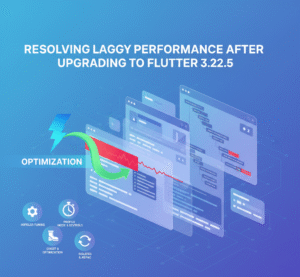The most significant technical change arriving with Android 15 is the mandatory support for 16KB memory page sizes on 64-bit devices. Historically, Android has utilized a 4KB page size. This transition is being driven by a need to improve performance, as 16KB pages are more efficient for modern ARM CPUs with large memory capacities.
The Deadline: Starting November 1, 2025, all new apps and updates to existing apps submitted to Google Play that target Android 15+ must be compatible with the 16KB page size.
Key Performance Benefits:
Faster App Launches: Gains of up to 30% for certain applications.
Improved Battery Usage: An average gain of about 4.5%.
Better System Efficiency: Reduces system overhead by managing fewer total memory pages.
Who Needs to Take Action?
The impact of this change varies significantly depending on your app’s codebase:
Pure Kotlin/Java Apps (No Native Code):
Generally, these apps are already compatible. The Android Runtime (ART) handles memory management, making your code page-size agnostic. Minimal testing in a 16KB environment is still recommended as a precaution.
Apps with Native Code (C/C++), or those using Native SDKs:
These are the apps that must be updated and recompiled. Native code often contains hardcoded assumptions about a 4KB page size for memory or file alignment, which will cause crashes on 16KB devices if not corrected.
Core Preparation Strategies
Development teams across the ecosystem are focusing on the following key steps to achieve compliance:
1. Update Tools and Dependencies
Android NDK (Native Development Kit): Teams are recompiling their native code using NDK r28 or higher. These modern toolchains automatically ensure that the final binaries are aligned for 16KB pages by default.
Android Gradle Plugin (AGP): Using AGP 8.5.1+ helps ensure correct packaging and alignment for uncompressed native libraries.
Third-Party SDKs/Libraries: This is often the biggest hurdle. Teams must ensure all third-party SDKs (e.g., for analytics, gaming engines, or specialized ML libraries) are updated to versions certified as 16KB-compliant by their respective vendors. Major platforms like Flutter and React Native have already prepared their core engines for this change.
2. Eliminate Hardcoded Assumptions
Native code frequently uses constants like #define PAGE_SIZE 4096. These assumptions about the page size must be removed.
The Fix: Replace hardcoded values with runtime queries to dynamically determine the page size. For C/C++ code, this means using functions like getpagesize() or sysconf(_SC_PAGESIZE).
Memory Management: Ensure that arguments for low-level memory functions like mmap() are correctly aligned to the dynamically determined page size.
3. Rigorous Testing in a 16KB Environment
Testing is crucial to verify that the recompiled native code functions correctly.
Android Emulator Support: The easiest way to test is by creating an Android 15 emulator with a 16KB-based system image, which is available directly in Android Studio’s SDK Manager.
On-Device Testing: On compatible devices (such as recent Pixel models running Android 15 QPR1), a new developer option allows for toggling the page size to 16KB for real-world verification.
4. Compliance Monitoring
APK Analyzer: The APK Analyzer tool in Android Studio is used to inspect the .so (native libraries) files within the app package, helping to visually confirm that the segments are correctly aligned for 16KB pages.
Google Play Console: The Play Console now provides compliance checks on submitted App Bundles, indicating whether the build supports the 16KB page size. Teams are integrating these checks into their CI/CD pipelines to catch non-compliant builds early.
Conclusion
The move to 16KB page sizes is a foundational change for Android, promising tangible performance and efficiency gains for users on future high-memory devices.
For development teams, the path to compliance is clear: Update your toolchain, recompile your native code (and all native dependencies), and test thoroughly using the 16KB emulator images. By acting now, teams can ensure a seamless transition before the November 2025 deadline and deliver the best possible experience to their users.







